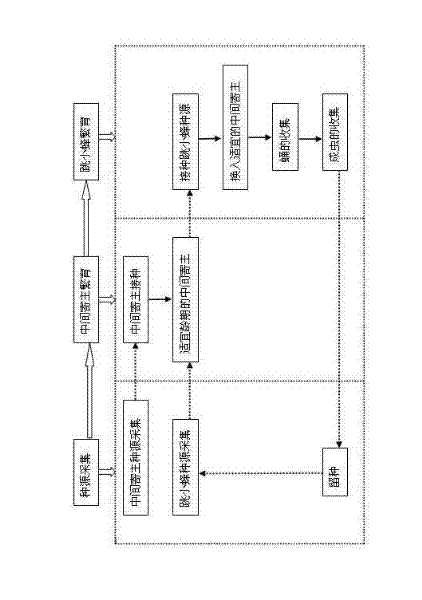Artificial propagation method of diversinervus elegans silvestri
A technology of bee jumping and artificial reproduction, which is applied in animal husbandry and other fields, can solve the problems of inoculation and collection of parasitic bees, the difficulty of operation, the impossibility of large-scale production, and the increase of difficulty and cost of reproduction, so as to ensure field control Effect, solve the effect of low reproductive efficiency and large number of bees per generation
- Summary
- Abstract
- Description
- Claims
- Application Information
AI Technical Summary
Problems solved by technology
Method used
Image
Examples
Embodiment 1
[0018] ⑴Collection of provenance of parasitoid wasps and intermediate host rubber helmeted scales:
[0019] In rubber nurseries or mature rubber gardens that have been infested by rubber helmeted scales, cut off the branches with scale insects rubber helmeted scales attached (some of which have been parasitized by the elegant scorpion) and bring them back indoors. Leave the unparasitized late female scale insects on the branches as intermediate hosts, and wait for the inoculation on the pumpkin as the propagation material to multiply, and put the other part of the scale insects together with the branches into the cage for collecting parasitoids, and wait for the elegant pulse to beat A bee emerges.
[0020](2) Reproduction of scale insects: the female scale insects of rubber helmeted scale insects as the intermediate host are lifted from the shell and placed on the surface of the pumpkin. The newly hatched nymphs will be scattered and fixed on the pumpkin, and at least 1...
Embodiment 2
[0024] ⑴Collection of provenance of parasitoid wasps and intermediate host rubber helmeted scales:
[0025] On the hibiscus infested by the rubber helmet scale, cut off the branches attached to the rubber helmet scale insect (some of which have been parasitized by the elegant Qimaitiao wasp), and bring them back indoors. Reserve the unparasitized late female scale insects on the branches as intermediate hosts, wait for inoculation on the propagation material for propagation, and put the other part of the scale insects together with the branches into the cage for collecting parasitoids, and wait for the elegant Qi pulse to jump. Bee emergence.
[0026] ⑵Reproduction of scale insects: Remove the scale insects as the intermediate host and place them on the surface of the pumpkin. The newly hatched nymphs will disperse and fix on the pumpkin. At least 1 / 3 of the eggs under the scale insects have hatched into 1st instar nymphs. Put about 30 effective insects to complete t...
PUM
 Login to View More
Login to View More Abstract
Description
Claims
Application Information
 Login to View More
Login to View More - R&D
- Intellectual Property
- Life Sciences
- Materials
- Tech Scout
- Unparalleled Data Quality
- Higher Quality Content
- 60% Fewer Hallucinations
Browse by: Latest US Patents, China's latest patents, Technical Efficacy Thesaurus, Application Domain, Technology Topic, Popular Technical Reports.
© 2025 PatSnap. All rights reserved.Legal|Privacy policy|Modern Slavery Act Transparency Statement|Sitemap|About US| Contact US: help@patsnap.com

